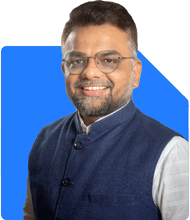I am in invest in SIP axis small cap 2.5k ,tata small cap 2.5k,parag parikh flexi cap 2.5k,tata digital cap 2.5k ..it is ok to continue
Ans: Investing in SIPs (Systematic Investment Plans) is a smart way to build wealth over time. Your commitment to disciplined investing is admirable. Let's assess whether your current SIPs align with your financial goals.
Portfolio Diversification
Your portfolio includes investments in different types of funds. This diversification is beneficial as it reduces risk.
Small-Cap Funds: Investing in small-cap funds can offer high growth potential. However, they are more volatile than large-cap or flexi-cap funds.
Flexi-Cap Funds: Flexi-cap funds provide a balance between risk and reward. They invest across large, mid, and small-cap stocks, offering diversification within the fund itself.
Sector-Specific Funds: Investing in sector-specific funds can offer high returns when the sector performs well. However, they come with higher risk due to their concentration in one sector.
Evaluating Risk and Return
Your current investments include both high-risk and moderately risky funds. It's essential to ensure that your risk tolerance aligns with your portfolio's risk level.
Risk Tolerance: If you have a high-risk tolerance and a long investment horizon, your current portfolio may be suitable. Small-cap and sector-specific funds can provide higher returns but also come with greater volatility.
Investment Horizon: For goals that are 7-10 years away, small-cap and flexi-cap funds can be appropriate. However, for shorter-term goals, consider adding more stability to your portfolio.
Performance Consistency
Assessing the performance consistency of your funds is crucial. While past performance is not a guarantee of future results, it does provide insight into how the fund has managed various market conditions.
Small-Cap Funds: These funds can have high returns in bullish markets but may underperform during downturns. Regularly monitor their performance to ensure they continue to meet your expectations.
Flexi-Cap Funds: These funds offer more stability than small-cap funds. They can balance your portfolio by cushioning the impact of market volatility.
Sector-Specific Funds: These funds can perform exceptionally well in favorable market conditions but may suffer during downturns in their specific sector. Regular monitoring is essential.
Portfolio Overlap
Another aspect to consider is the overlap between the funds in your portfolio.
Overlap in Holdings: If multiple funds in your portfolio hold the same stocks, it reduces the benefit of diversification. Check for overlap and consider whether each fund adds unique value to your portfolio.
Diversification Across Asset Classes: Ensure your portfolio is diversified across different asset classes, not just equity. This can include debt funds, gold, or other alternatives to reduce overall risk.
Active Management Over Index Funds
Since you are investing in actively managed funds, it's important to understand the benefits over index funds.
Actively Managed Funds: These funds have the potential to outperform the market. Fund managers actively select stocks to maximize returns, which can provide an edge over passive investments like index funds.
Disadvantages of Index Funds: Index funds merely replicate the market and may not provide the same potential for outperformance as actively managed funds. Additionally, they may not protect as well against market downturns.
Benefits of Regular Funds Through a Certified Financial Planner
Investing through a Certified Financial Planner (CFP) ensures you receive personalized advice tailored to your financial goals.
Guidance and Expertise: A CFP can provide insights into fund performance, market conditions, and portfolio adjustments. This expertise can help optimize your investments.
Regular Funds vs. Direct Funds: While direct funds have lower expenses, regular funds offer access to professional advice. This can be especially valuable in managing complex portfolios.
Investment Strategy
Given your current portfolio, consider a few strategic adjustments to ensure it continues to meet your financial objectives.
Rebalance Regularly: Periodically rebalance your portfolio to align with your goals and risk tolerance. This involves adjusting the allocation between different funds to maintain your desired risk level.
Focus on Long-Term Goals: Keep your long-term financial goals in mind. If your goals or risk tolerance change, adjust your portfolio accordingly.
Monitor and Adjust: Regularly monitor the performance of your investments. If a fund consistently underperforms, consider replacing it with one that aligns better with your objectives.
Final Insights
Your commitment to SIPs is a positive step toward achieving your financial goals. Continue to assess your risk tolerance, investment horizon, and portfolio diversification. Consider the benefits of active management and professional guidance through a Certified Financial Planner to optimize your investments.
Best Regards,
K. Ramalingam, MBA, CFP,
Chief Financial Planner,
www.holisticinvestment.in



























